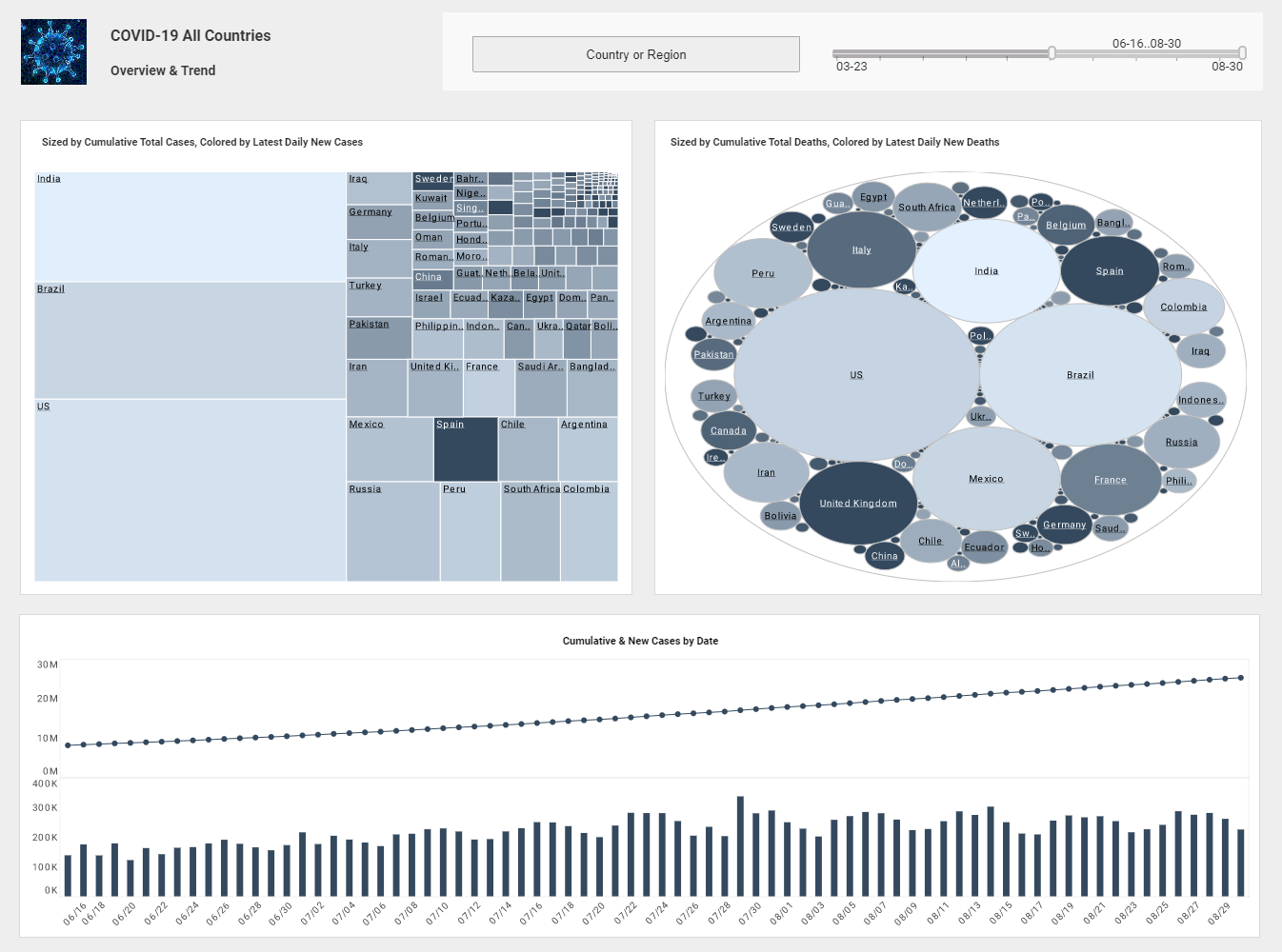InetSoft Webinar: What Is Executional Agility?
This is the continuation of the transcript of a Webinar hosted by InetSoft on the topic of "Business Intelligence Agility" The speaker is Mark Flaherty, CMO at InetSoft.
Now let’s talk about executional agility. Nowadays you have to be able to deliver a new service in weeks, not months, because within two weeks all your competitors are going to offer the same thing. When you’re taking a look at marketing campaigns, you need a better understanding of customer buying behavior. Does it take you 5 or 6 months to get those insights disseminated, or can you quickly get those into your organization? That is the flexibility and agility that you need to build in.
You have to start taking a very strong focus around processes and understanding of your customers. Through a focus around process, you can find what drives innovation and thereby continuously stay ahead of the competition. You need to drive agility. Agility is more than a term. You can quantify the benefits of this focus around agility, and you can see the return on your investment. It’s as much around driving the revenue growth as it is profitability.
There is also a benefit in terms of resource utilization. A higher return on capital, as well as a more consistent return, are goals. In this case you are serving to lower valuation volatility. The result is your business can better anticipate changes as well as can better respond to those changes going forward. You have to make sure that as you focus on agility, you focus on the integrity of the process. Consistently manage those customer expectations. Build in operational dexterity.
| #1 Ranking: Read how InetSoft was rated #1 for user adoption in G2's user survey-based index | Read More |
You got to do this within the understanding of your cost constraints. There is no open check book. You are always looking to do it a couple of points cheaper than you did before. You need to be able to constantly repeat a process and constantly improve upon it. And the last key is being in the ability of provide transparency and visibility throughout the organization. Realize, too, that the organization is now the extended business network. It’s not only inside, but it’s your partners, your channels, and your third party service providers.
As part of striving for agility, you are asking yourself how do I get there in a timely fashion? Initially take a look at every process, and then as you identify and prioritize your processes, take a look across your road map and understand where you want to get to. Have a road map. It’s not only this project. It’s the next project. It’s the next three projects. How do they build upon each other? How do I leverage the technology once again to continuously maximize the return of the various projects? The way do that is to focus around process improvement and processes that consist of human interactions, the collaborations that need to occur and the information and support of those processes.
When evaluating each and every business process, don’t only take a look at those that you’ve already mastered, but take a look at every single process. Are you doing things via email? What are things that we can automate? How can I take a look at this as partners and suppliers and include those things that are not only transaction based but are also human based.
It’s a collaborative step in this process. There are a lot of inefficiencies and ways that we can improve upon them, and the key question here is how can I differentiate myself across these processes. Here’s a case study to share. It is from a major grocer who had about 32,000 employees working in 166 stores. One of their competitive advantages was around their people. They were counted as one of the top 100 places to work.
Read what InetSoft customers and partners have said about their selection of Style Scope for their solution for dashboard reporting. |
They wanted to take a look at the way that they were interfacing between corporate and the employees via managers. They were taking a look at leveraging concepts like business process management as a way of really trying to improve service to employees who would in turn provide a better customer experience. The idea is that better employees correlate to better customer experience. They were taking a look at the ability to quickly look at requests, validate those requests and provide visibility to the process once an employee submits the request. In the end they were able to respond 400 percent quicker than before.
| Previous: How Do You Grow Your Business? |



